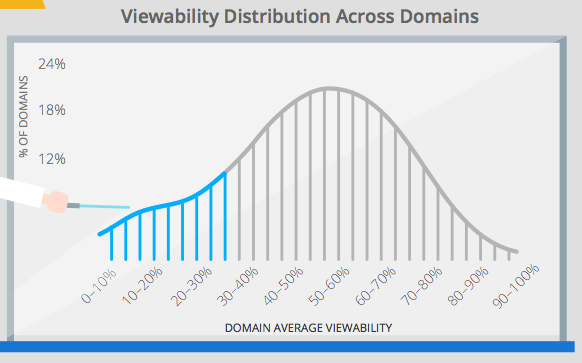Online advertising, much like its “traditional” physical ancestors, has been likened by some to throwing darts at a board and hoping they land in fruitful spots. Marketers are often skeptical about whether or not their ads are being seen by actual humans; unfortunately, a new Google report confirms their misgivings.
The report, an infographic titled “Five Factors of Viewability,” breaks the news in no uncertain terms: “Many display ads that are served never actually have the opportunity to be seen by a user.” Google’s stats, gathered in conjunction with company-owned ad platform DoubleClick, claim 56.1 percent of all ads served online meet with human eyes, while comScore’s own independent estimation pegs the figure at just 46 percent.

What can be done to remedy this situation Google offers advice in the form of reasons given for non-viewability, which include a user scrolling past an ad too quickly to take it in, an ad’s only “viewer” being a robot, and an ad failing to even deliver in the first place. Google also noted a wide gulf in visibility figures between “above-the-fold” ads, displayed at the top of a page, and “below-the-fold'” which requires scrolling to be seen: Above-the-fold sits at 68 percent visibility, while below-the-fold struggles at a comparably paltry 40 percent.
The news is just the latest catalyst for efforts to phase out currently popular payment systems based on impressions and replace them with ones favoring viewability.
The Internet Advertising Bureau is hard at work on an ambitious initiative known as 3MS (“Making Measurement Make Sense”), a self-described “testament to the ability of markets to self-correct when their participants aren’t being served,” while Google looks on towards the future with their own Active View technology.
Adoption of core viewability-based principles by big advertising names is a major first step in shifting online advertising techniques to a point that works better for marketers and consumers alike.

